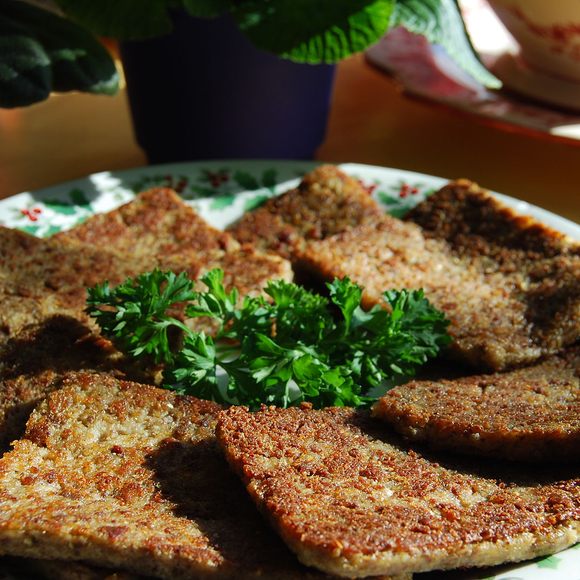Livermush, liver mush, liver and mush—no matter how you say it, this Southern dish doesn’t exactly sound appetizing. But in North Carolina, seniors express fond memories of this savory sliced loaf made from pork liver, scrap meat (often from the pig’s head), spices, and cornmeal.
Historian Tom Hanchett traces livermush back to a mixture of pork scraps, buckwheat, and spices brought to the United States by German immigrants in the 1700s and referred to as pon hoss (possibly from pfanne hase, or “pan rabbit” in German). This mixture made its way south, transforming into scrapple in Pennsylvania’s Amish country, becoming livermush as it traveled down through the Shenandoah Valley into the Piedmont region of North Carolina, and finding its home around Charlotte.
Unlike pon hoss, livermush is made with cornmeal rather than buckwheat, and unlike scrapple, it has a higher ratio of liver (at least 30 percent, to be exact). Cooks grill or fry the slices of livermush, serving them alongside grits and eggs, inside sandwiches with mustard and grilled onions, and even as a pizza topping.
In addition to being a proud part of Southern identity, making livermush is an innovative and tasty way to enjoy nose-to-tail eating—that is, using all parts of an animal without letting anything go to waste. Sometimes called the “poor man’s pâté,” livermush was a popular Depression-era substitute for more expensive cuts of meat, providing a flavorful source of calories and protein for families on a tight budget.
While livermush may not be as common today as in the lunch boxes of yore, the traditional treat gets its dues. The Mutts, Music, and Mush Festival of Shelby, North Carolina, celebrates livermush heritage with a recipe contest, a livermush-eating contest, and a Little Miss Livermush Pageant, not to mention craft beer and dogs in costume.
Where to Try It
-
Brooks' Sandwich House
2710 N Brevard St, Charlotte, North Carolina, 28205, United StatesA small roadside stop that slings burgers and livermush sandwiches from a walk-up window.
Written By
 Leigh ChavezBush
Leigh ChavezBush
















